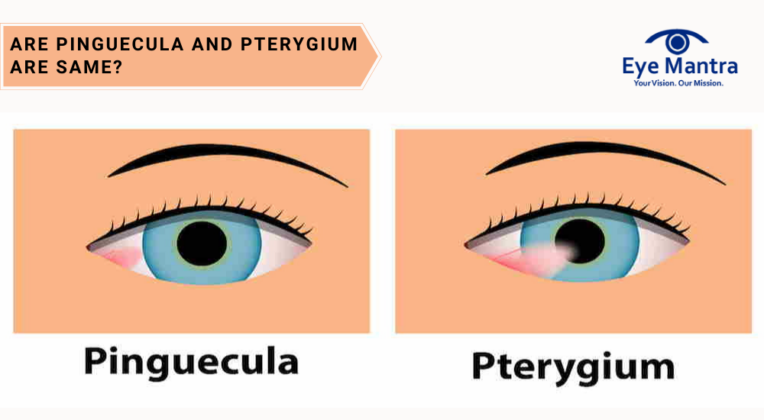
Contents
A pinguecula is a growth that develops on the conjunctiva. The expansion is typically yellow and tends to develop on the side of the attention closest to the nose. The conjunctiva is the transparent membrane that covers the whites of the eyes.
Pinguecula consists of protein, fat, and calcium. It’s going to be small and hardly noticeable, or it’s going to be large and that’s enough to cause discomfort.
Pinguecula may appear as a yellow area within the white of the attention. People that have tons of exposure to the sun’s UV rays could also be more likely to develop a pinguecula.
According to a 2019 review, pinguecula is more common in people that live near the equator, where the sun’s rays are strongest. Due to the high exposure to dryness, dust, and wind can also increase a person’s risk of developing a pinguecula.
According to a 2019 study, wearing soft contact lenses is reduces the person’s risk of developing a pinguecula.
The main symptom of a pinguecula may be a yellow spot or bump on the whites of 1 or both eyes. The spot could also be round or triangular. Most of the people who develop a pinguecula experience only mild symptoms. But in some cases, an individual may experience the subsequent symptoms in one or both eyes:
According to one 2017 review, a pinguecula doesn’t grow onto the cornea of the attention. This suggests that there’s only a coffee risk of the pinguecula interfering with a person’s vision.
If an individual notices any changes in their eyes, they ought to arrange a meeting with a doctor. The doctor may then refer the person to a specialist ophthalmologist, like an ophthalmologist or optometrist.
The eye doctor may examine the attention under a special light employing a magnifying lens. This procedure is usually enough to permit them to spot and diagnose a pinguecula.
If the pinguecula is causing symptoms, they’re going to recommend some appropriate treatments to assist the person manage any discomfort.
Pingueculae doesn’t usually require treatment. However, if the expansion is causing bothersome symptoms, an individual can try over-the-counter (OTC) or prescription medications. Surgery is typically reserved for pingueculae that cause severe eye irritation and people that cause cosmetic concerns. The sections below will outline these treatment options in additional detail.
OTC eye drops could also be helpful for symptoms like dryness, burning, and itching. Some drops are labelled as “artificial tears” and work like natural tears to assist lubricate the eyes. There also are many artificial tears contain preservatives. These can cause eye irritation in some people. If an individual does develop eye irritation, they ought to think about using preservative-free drops that are available single-use vials. Eye ointments also are available. These tend to stay within the eye for extended than artificial tears. Due to this, they’ll be suitable for more severe cases of dryness and discomfort. People should tell their ophthalmologist about any eye drops they use.
If OTC eye drops and ointments don’t alleviate the symptoms of a pinguecula, a doctor may recommend trying prescription eye drops. Eye drops that contain a steroid can help with swelling and inflammation. They’ll also help alleviate the unpleasant sensation of sand or grit being within the eye.
Surgery could also be an option for people that don’t find symptom relief from OTC or prescription treatments. People may prefer to have a pinguecula removed for cosmetic reasons. During the procedure, a surgeon will remove the pinguecula. They’re going to then use a special glue to transfer a bit of healthy conjunctiva to the world from which they removed the pinguecula.
In 2019 study, found that surgery combined with a graft of healthy conjunctiva tissue can remove pingueculae and alleviate associated dry eye symptoms.
Many people think that pinguecula and pterygium are equivalent things but they’re not. A pinguecula may be a yellowish bump or patch located in your sclera (conjunctiva) whereas a pterygium may be a growth of fleshy tissue which will grow over the cornea.
The reality: a pterygium can arise from a pinguecula.
If a pinguecula grows, it’s going to become another sort of benign growth called a pterygium.
Like a pinguecula, a pterygium also grows on the conjunctiva of the attention. Unlike a pinguecula, however, a pterygium has its own blood vessels. For this reason, a pterygium is usually larger, and it’s going to be red, pink, or yellow. A pterygium may cause more symptoms than a pinguecula. A pterygium is additionally more likely to interfere with a person’s vision.
Because sunlight appears to be a risk factor for developing pingueculae, people should look out to guard their eyes against the sun. This also helps prevent other eye conditions, like cataract and cancer.
Below are some things an individual can attempt to protect their eyes from sunlight and other irritants:
Wraparound sunglasses block 99–100% of UV rays. People should wear them whenever they are going outside or get into a vehicle, albeit it’s cloudy, raining, or snowing outside.
A wide-brimmed hat helps keep the sun’s rays off the face and eyes.
People should wear safety goggles or other appropriate eye protection when working in dusty or dirty environments.
If an individual has dry eyes, they ought to speak with an eye fixed doctor about medications they will use to stay the eyes lubricated.
We also offer various services like Retina Surgery, Specs Removal, Lasik Surgery, Squint, Cataract Surgery, Glaucoma surgery, and much more.
Related Articles:
Quick Home Remedies for Pink Eye
Computer Eye Strain Relief